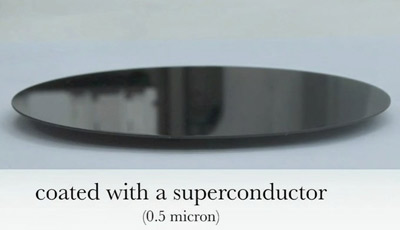
The capabilities of superconductors and quantum locking are astonishing. In Boaz Almog's famous demonstration of quantum locking, he uses a 3 inch diameter disk of sapphire coated in a layer of a high temperature superconducting material called Yttrium Barium Copper Oxide. This layer of superconducting material is only 0.5 microns thin or 5x10^-7 meters thick. This minuscule amount of superconducting material is able to hold 70,000 times its own weight. By extrapolating these figures you are able to calculate that a 3 inch diameter disk that is 2 millimeters thick can support a mass of 1000 kilograms. This would give someone the ability to easily hold a mass of 1000 kilograms in the palm of their hand. This kind of ability has countless advantages and can change the way people live their daily lives. We would be able to create lift systems that are capable of moving incredible amounts of weight almost effortlessly. Quantum locking also has the potential to transform the way we go about mass transport. Creating railroads out of magnets and layering the bottom of trains with room temperature superconducting materials would allow for near frictionless motion which would allow us to transport millions of tons by rail with minimal effort.
The downside of Yttrium Barium Copper Oxide is that it is only a superconducting material at a temperature of about 90 Kelvin. This means that it must be suspended in liquid Nitrogen in between uses in order to cool it down and allow it to maintain its superconductive properties. This makes Yttrium Barium Copper Oxide wildly impractical for commercial use or mass production. With advancements in superconductor technology and superconducting materials, we have the potential to create superconductors that can function at room temperature.
The downside of Yttrium Barium Copper Oxide is that it is only a superconducting material at a temperature of about 90 Kelvin. This means that it must be suspended in liquid Nitrogen in between uses in order to cool it down and allow it to maintain its superconductive properties. This makes Yttrium Barium Copper Oxide wildly impractical for commercial use or mass production. With advancements in superconductor technology and superconducting materials, we have the potential to create superconductors that can function at room temperature.